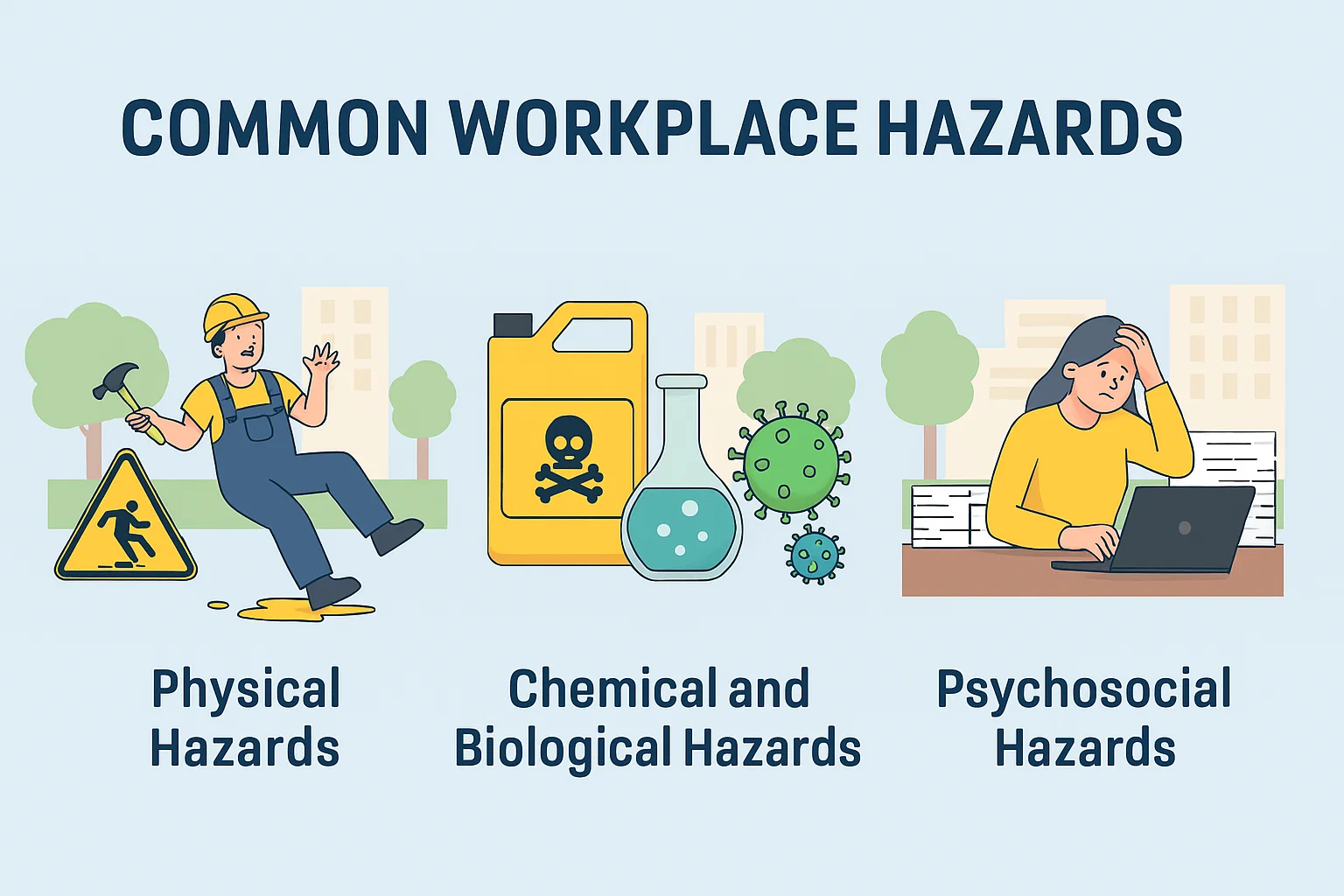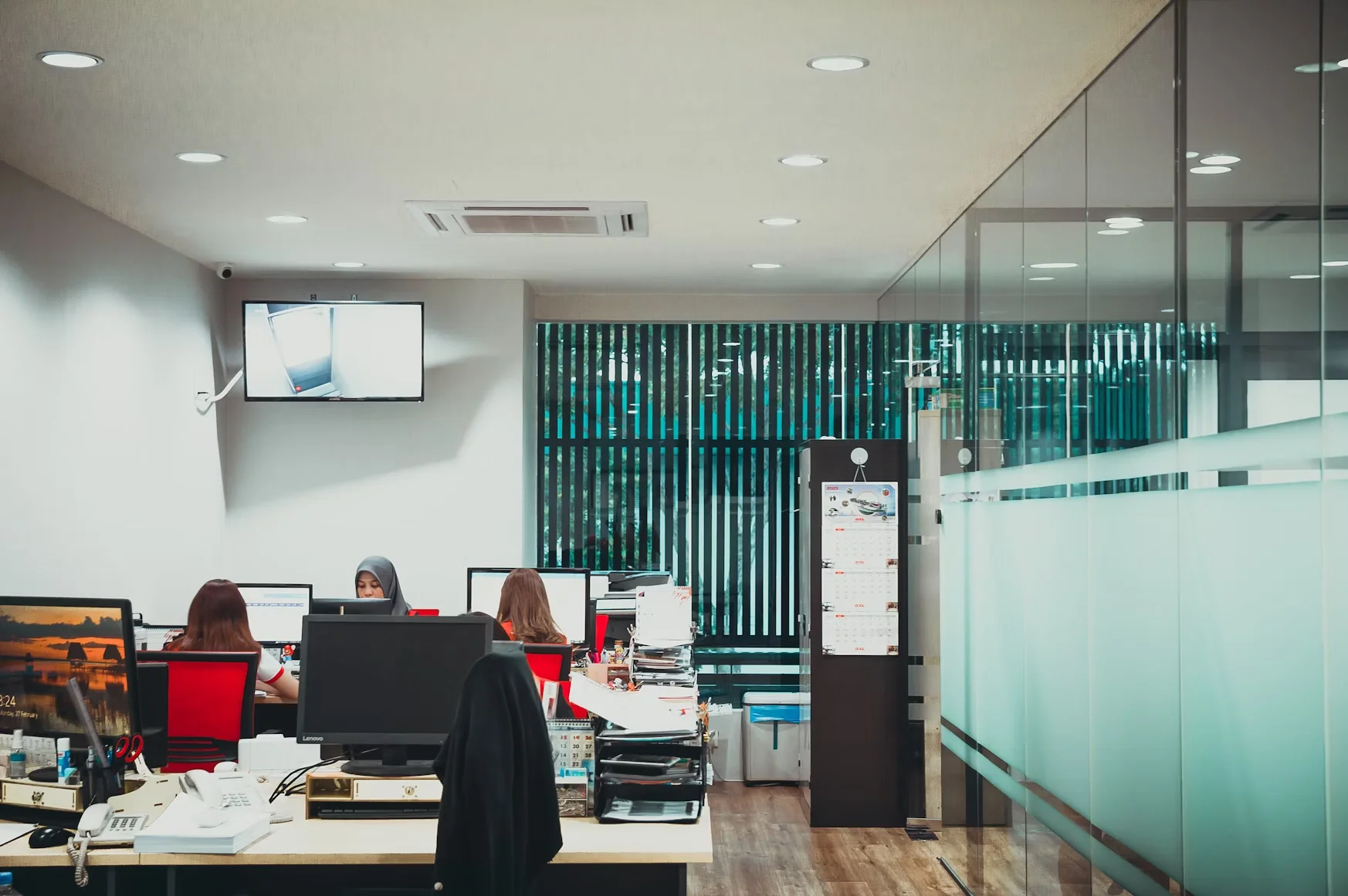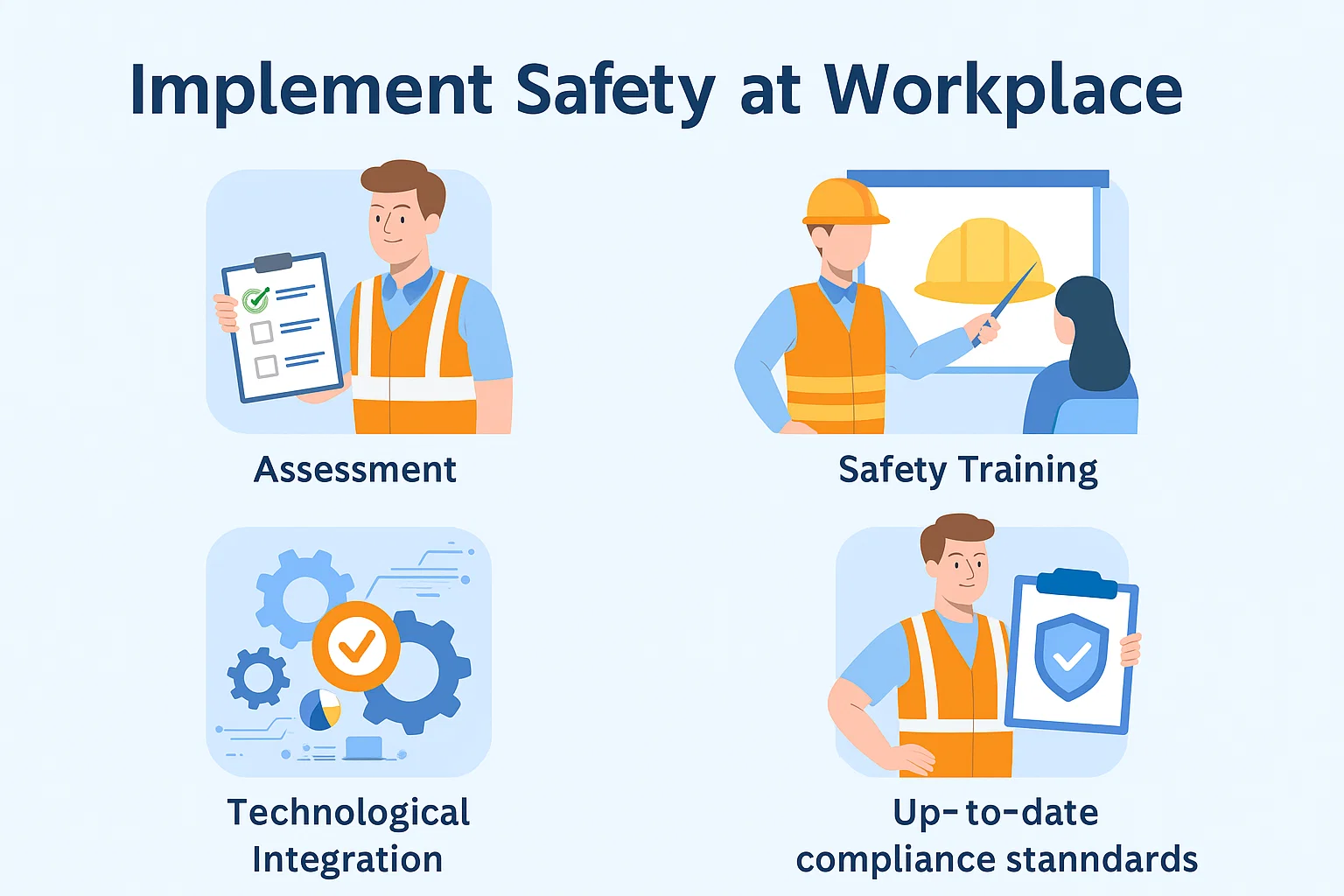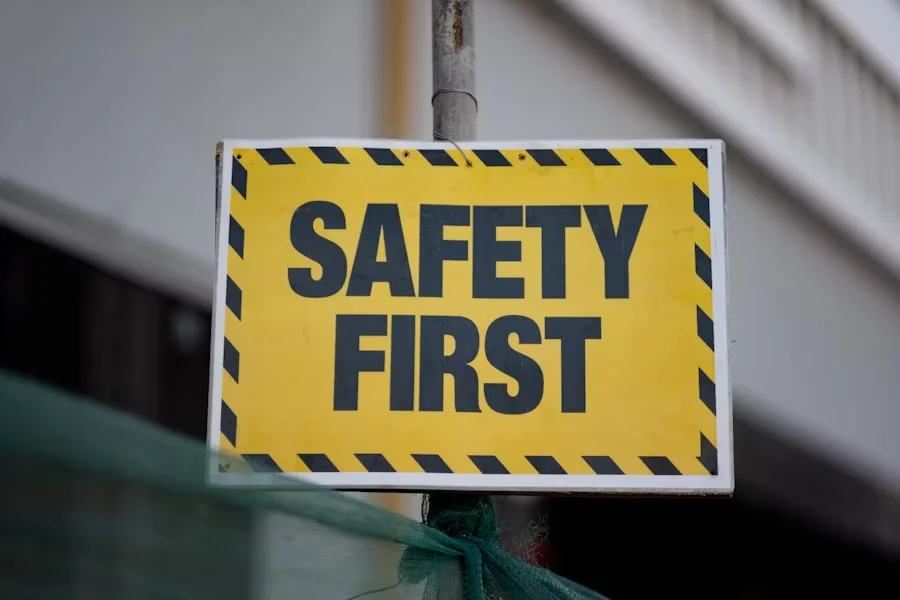
Workplace Safety Tips to Keep Employees Safe and Productive
Workplace safety is a key part of running a business, and refers to the policies, environment, and culture that protect workers from harm. Knowing what safety is in the workplace is important for the health of employees and the success of the organization, whether it’s in manufacturing, healthcare, or a mix of both.
In a world where risks are always changing, from physical dangers to cyber threats, safety in the workplace should never be taken for granted. Employers need to go beyond traditional hazards and use smarter safety technologies now that hybrid work patterns are becoming the norm. For example, visitor management systems may help keep facilities safe by controlling who can enter, and workspace scheduling software can help optimize space and keep track of who is using it.
What is Workplace Safety?
Safety at work, or workplace safety, is the set of rules, procedures, training, and environmental controls that keep workers safe from getting hurt, getting sick, or having their job interrupted. It includes many aspects, such as:
- Physical Safety – For example, avoiding slips, falls, and ergonomic problems
- Health Safety – For instance, managing chemical exposure and biological risks
- Psychosocial Safety – For instance, dealing with stress and harassment
- Security Safety – For example, making sure that building access is controlled and that the building is ready for emergencies
Modern workplace safety strategies go beyond physical protection. In today’s flexible workspaces, solutions like a desk booking system, workspace scheduling software, or room reservation tools help secure shared spaces and support hybrid work models. Visitor management systems are vital for workplace access control. They ensure that only authorized people can get in and help the organization prepare for emergencies. These tools are necessary for keeping the workplace safe, productive, and healthy.
Ensuring people’s safety at work is a complex and changing process. Organizations can make their spaces safer and more productive for everyone by using innovative technologies like visitor and space management systems and solid rules.
Why Workplace Safety Matters
Safety at work isn’t just about following the rules; it’s a top business priority. Keeping employees safe and stopping accidents is suitable for their health and the company’s long-term prosperity.
Here are some more reasons why you should highly consider implementing strict workplace safety measures:
- A safe place makes people healthier, happier, and more productive. Workers who feel secure are more focused, interested, and less inclined to miss work.
- It supports employee well-being, promoting loyalty and collaboration.
- Employers benefit from keeping their employees safe at work because it reduces downtime, legal risks, and compensation claims.
- Companies that put safety first build a better reputation, attract better workers, and keep their workers longer.
More than 2.8 million people in the U.S. get hurt at work every year, and most of these accidents could have been avoided. The Occupational Safety and Health Administration says every dollar spent on safety can save $4 to $6 in costs and boost productivity.
Proactive safety tools are even more critical now that there are problems like congested public places and threats to security. Visitor management systems assist in keeping people out of buildings and make them more ready for emergencies.
Tools like a desk booking system or workspace scheduling software help keep track of who uses shared areas, keep people apart, and make the best use of those spaces in hybrid offices. In the end, safety at work is an investment in strategy. It keeps people safe, improves performance, and makes organizations stronger from the inside out.
Common Workplace Hazards
Understanding common hazards is the first step toward a safer workplace. Some hazards are exclusive to certain industries, but most are present in almost every workplace.
1. Physical Hazards
These are the threats that are most obvious and happen the most often. Some of these are risky machines, too slippery flooring, and bad ergonomics because workstations aren’t set up well. Over time, doing the same thing over and over again and getting tired can cause injuries, even at work.
2. Chemical and Biological Hazards
Cleaning products, solvents, and industrial chemicals might harm your skin, lungs, or eyes. Additional biological dangers, such as mold, viruses, and bacteria, are especially important in the food and healthcare industries. To ensure workplace safety, it is very important to have good ventilation, clear labels, and personal protective equipment.
3. Psychosocial Hazards
Stress, harassment, and too much work can hurt your mental health and cause burnout or fights. An excellent safety culture should include mental and emotional health as part of a complete workplace safety approach.
Top Workplace Safety Tips for Employees and Employers
The following safety tips for work are meant to assist workers and bosses in creating a work culture that is safer, more productive, and more flexible.
Take steps to avoid problems first
It’s always preferable to prevent accidents than to deal with them. Frequent training is one of the best ways to keep people safe at work. Employers should ensure that all of their employees, whether they work full-time, part-time, or a mix of the two, know about possible dangers, safe work practices, and what to do in an emergency.
Besides training, there should be clear signs for dangerous places, fire exits, and first-aid stations. Safety gear, including PPE, machine guards, and ergonomic tools, must be easily accessible and kept in good condition. A desk booking system or room reservation tools can help keep hybrid or shared spaces from getting too full and lower the danger of spreading germs in busy areas.
Embed workplace safety into everyday behavior
Policies alone don’t create a good safety culture; it emerges from daily activities. Workers should report unsafe conditions without worrying about getting in trouble. When everyone is responsible for safety, fewer accidents and problems are reported more quickly.
One way for leaders to keep their employees safe is to set a good example. When managers and supervisors prepare for safety and model safe conduct, employees are likelier to do the same. Companies should use workspace scheduling software to track who is in the office and ensure there is enough distance between people for safety. These solutions are helpful in hybrid work models, where keeping track of who is in the office and when is important for safety.
Make a clear plan for how to respond to an emergency
Every second counts when there is an emergency, such as a fire, a natural disaster, or a threat to security. It’s essential to have a clear and tested plan for how to respond to an emergency. This plan should have evacuation plans and places where people should meet, responsibilities, emergency contacts, and a way for workers to swiftly and accurately get the word out.
Visitor management tools can help businesses enhance security and reaction times. These systems keep track of everyone on the property, including guests and contractors. This way, emergency responders and management teams have precise headcounts and access logs when they need them most. This is a vital work safety tip that every company should undertake.
Keep Getting Better
One work safety suggestion that people often forget is to consider safety an ongoing project. Do regular audits, look over incident reports, and change procedures to take into account new hazards or technologies. Ask your employees for feedback on what’s working and what’s not. Frontline workers are generally the first to notice problems.
Even tools for scheduling are essential here. For instance, companies can track how often their desks are used, find places with a lot of traffic, and modify the structure of their offices to make them flow better and reduce dangers. Modern tools make it easier than ever to keep high safety standards in various workplace types. For example, visitor management solutions may help you regulate who has access to your building, and workspace scheduling software can help you keep track of who is in your building at all times.
Promoting a Culture of Safety at Work
Step 1: Leaders should set an example in building a good workplace safety culture
When managers prioritize safety by following rules, being transparent with their teams, and buying safety products, they set an example for everyone else.
Step 2: Encourage employees to give feedback and get involved
This builds trust and makes it easier to disclose hazards. Culture doesn’t just come from the top down. Workers are generally the first to see risks; therefore, their opinion is very important for workplace safety.
Step 3: Regular safety audits and ongoing improvements
This also indicates that safety is more than just a box to tick; it’s a promise to keep. Employers can make work safer by monitoring trends, updating training, and using technologies like visitor management systems or workplace scheduling software to help keep the work safe and well-organized.
In short, work safety becomes a shared value when everyone does their part.
Keep Workplaces Safe with DeskFlex
Secure, organize, and protect your teams with our smart scheduling and visitor management solutions.
Safety Compliance and Legal Requirements
Following safety rules is a very important part of keeping the workplace safe.
Regulatory Bodies
In the United States, the Occupational Safety and Health Administration (OSHA) oversees workplace safety. Canada has the Canadian Centre for Occupational Health and Safety, and Australia follows guidelines from Safe Work Australia. This regulatory agency makes rules employers must follow to keep their workers safe. Other countries have their own local regulatory agencies that make their own rules.
Required Documentation, Training, and Reporting
Employers must keep accurate records, give employees regular safety training, and report any injuries or accidents that happen at work immediately. These processes ensure that dangers are found and dealt with, keeping workers safe and informed.
Penalties for Non-Compliance
Not following the rules can result in heavy fines, lawsuits, and damage to your reputation. Not following the rules puts employees’ health and safety at risk and makes it harder for the organization to keep going.
Using tools like visitor management software can help with compliance by keeping track of who has access and making the workplace safer. Workspace scheduling software can also help with occupancy restrictions and social distancing, which are essential for achieving modern regulatory requirements.
How to Implement a Workplace Safety Program:
A clear plan and the correct tools are the first steps in making a good workplace safety program.
Assessment
Start by assessing each department for potential physical, chemical, biological, and psychosocial risks. Once you know what the dangers are, make sure you have clear safety rules that fit your workplace. Next, implement plans for training and onboarding.
Safety Training
Every person, whether they work on-site or from home, should have safety training specific to their job. Checklists, online modules, and live sessions ensure consistent and accessible training. Set up regular upgrades and refresher sessions to ensure they work in the long run.
Technological Integration
As new rules, office technologies, and ways of doing business emerge, safety rules should change, too. For instance, desk booking systems or workspace scheduling software can help keep people safe and a distance in hybrid offices.
Visitor management systems also help track who comes into and out of a building and make it safer, which is especially beneficial during emergency drills or when responding to an event.
Up-to-date compliance standards
Your workplace safety program can keep workers safe, fulfill compliance standards at workplace, and help your business run more smoothly and be more resilient using contemporary tools and wise planning.
A Culture of Safety and Productivity
In an ever-evolving workplace, safety is no longer just a set of compliance rules at workplace; it must be a dynamic and ongoing commitment. It’s about more than just following regulations; it’s about building a strong culture where every team member feels secure and valued. By combining proactive measures, like regular training and risk assessments, with innovative technologies, businesses can create a truly resilient and productive environment.
Tools like a desk booking system and workspace scheduling software are essential in today’s working environment. It helps manage occupancy and maintain a safe physical distance. At the same time, visitor management solutions enhance security and help with emergency preparedness.
By making these smart investments, companies can protect their most important asset, their people, and ensure that safety and productivity go hand-in-hand. A commitment to a healthier, happier, and more successful organization.
Explore our guides at DeskFlex to learn more about the tools that can help you protect your people, property, and future.




































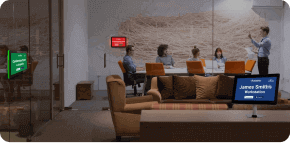










 Support
Support  Demo
Demo  Blog
Blog 